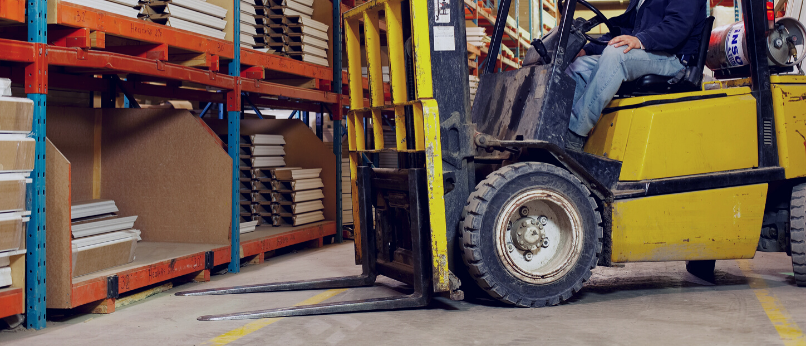
How Much Does a Forklift Weigh?
Share
Have you ever wondered how much forklifts weigh? If so, you're in the right place.
In this article, we’ll dive into the weight of forklifts, explore some real-world examples, and discuss why understanding forklift weight is crucial.
Key Takeaways:
- The average forklift weighs 13,320 pounds.
- The median forklift weight is 12,474 pounds.
How Much Does a Forklift Weigh?
To gain a clear understanding of forklift weights, I analyzed data from 84 common models, divided equally among Toyota, Caterpillar, and Hyster.
The average weight of these forklifts was 13,320 pounds. Half of the forklifts weighed more than 12,474 pounds, while the other half weighed less.
On average, Toyota forklifts were the heaviest, followed by Caterpillar and Hyster.
Common Forklift Weights
Below, you'll find the forklift models and their weights that were used to determine average forklift weights:

Forklift Weight vs. Forklift Capacity
It’s crucial to distinguish between forklift weight and forklift capacity, as they are not interchangeable terms. Knowing the difference ensures safe and effective use of the equipment.
Forklift Weight refers to the actual weight of the forklift itself, including any attachments installed on it. This is known as the service weight. Forklift Capacity, on the other hand, is the maximum weight a forklift can safely lift and carry
Typically, a forklift's service weight will increase with its lift capacity. This added weight helps balance the load and maintain stability, preventing the forklift from tipping over. Generally, a forklift’s weight is 1.5 to 2 times its rated lift capacity.
For instance, if a forklift has a lift capacity of 5,000 pounds, its weight will usually range from 7,500 to 10,000 pounds. However, this is a rough estimate. Always refer to the manufacturer's specifications or the forklift's data tag for precise information.

Why is it Necessary to Know a Forklifts Service Weight
Transporting: Knowing the forklift’s weight helps you choose the right truck for transportation, ensuring it can handle the load. When shipping, this information enables the cargo manager to balance the total weight of the cargo, maintaining stability during transit.
Floor Damage: Forklifts can be hefty, so it’s essential to ensure the floor of the work area is built to support the unit’s weight. Regularly repairing floors due to damage can become costly over time, making it vital to plan and construct accordingly.
Driving on Ramps: If your forklift will be driven up and down ramps—whether for unloading vessels or at a loading dock—knowing its weight is key. This ensures that ramps are properly reinforced to handle the forklift’s load safely.
How to Identify Forklift Weight and Capacity
A forklift typically comes with a manufacturer's tag or "nameplate" that provides essential information for quick reference.
This plate details the forklift's rated capacity at specific heights and includes data on down-rated power, accounting for maximum fork height, side shifters, and other attachments.
In essence, the weight of a forklift is unique to each machine. To confirm the exact weight, simply check the manufacturer’s tag on your forklift. Remember, forklift weight and forklift capacity are distinct—your forklift’s weight must always be greater than its capacity.
If you need help finding the perfect attachment for your forklift or require guidance in choosing the right one, don’t hesitate to contact us. We’re here to assist!

